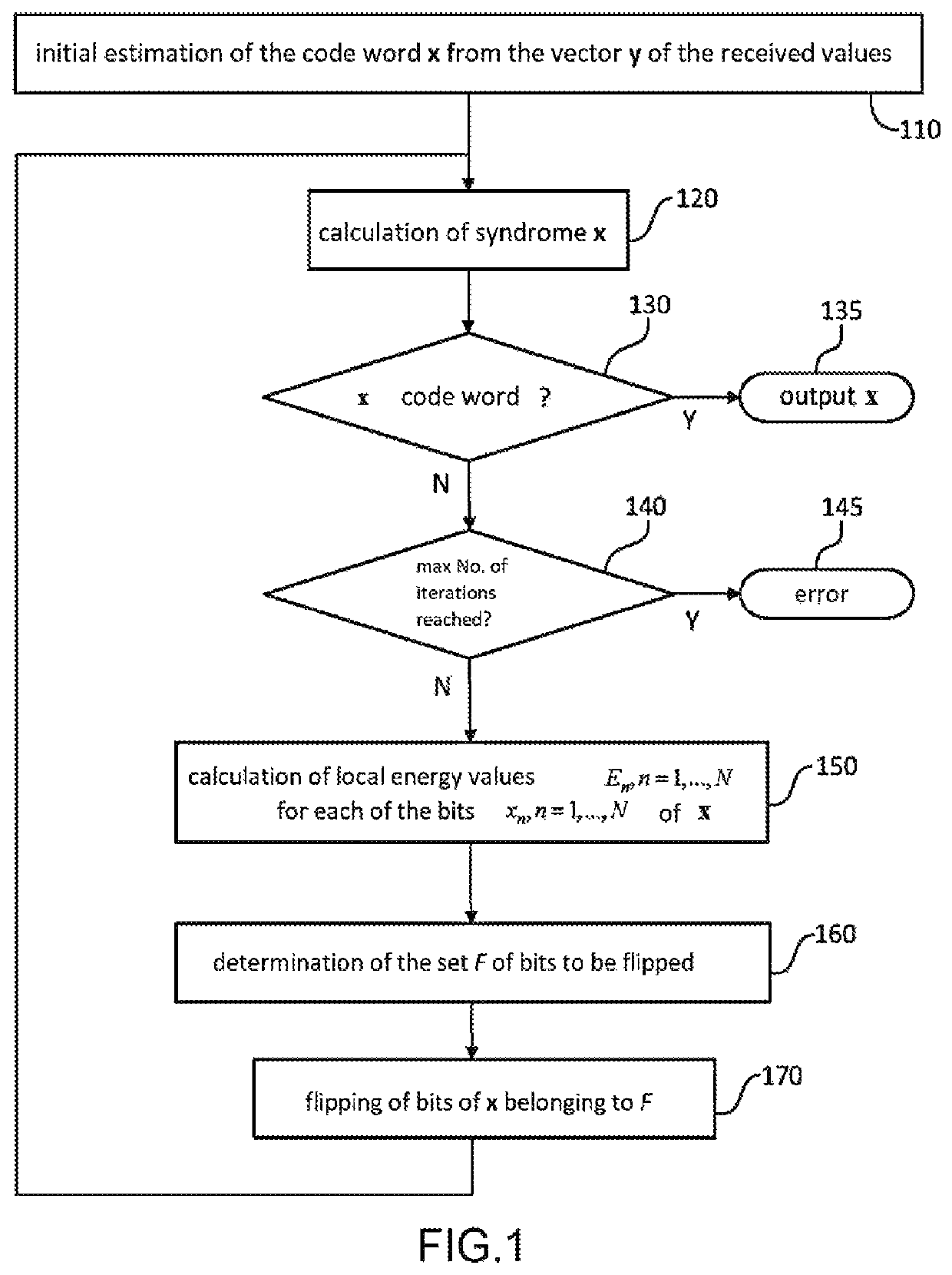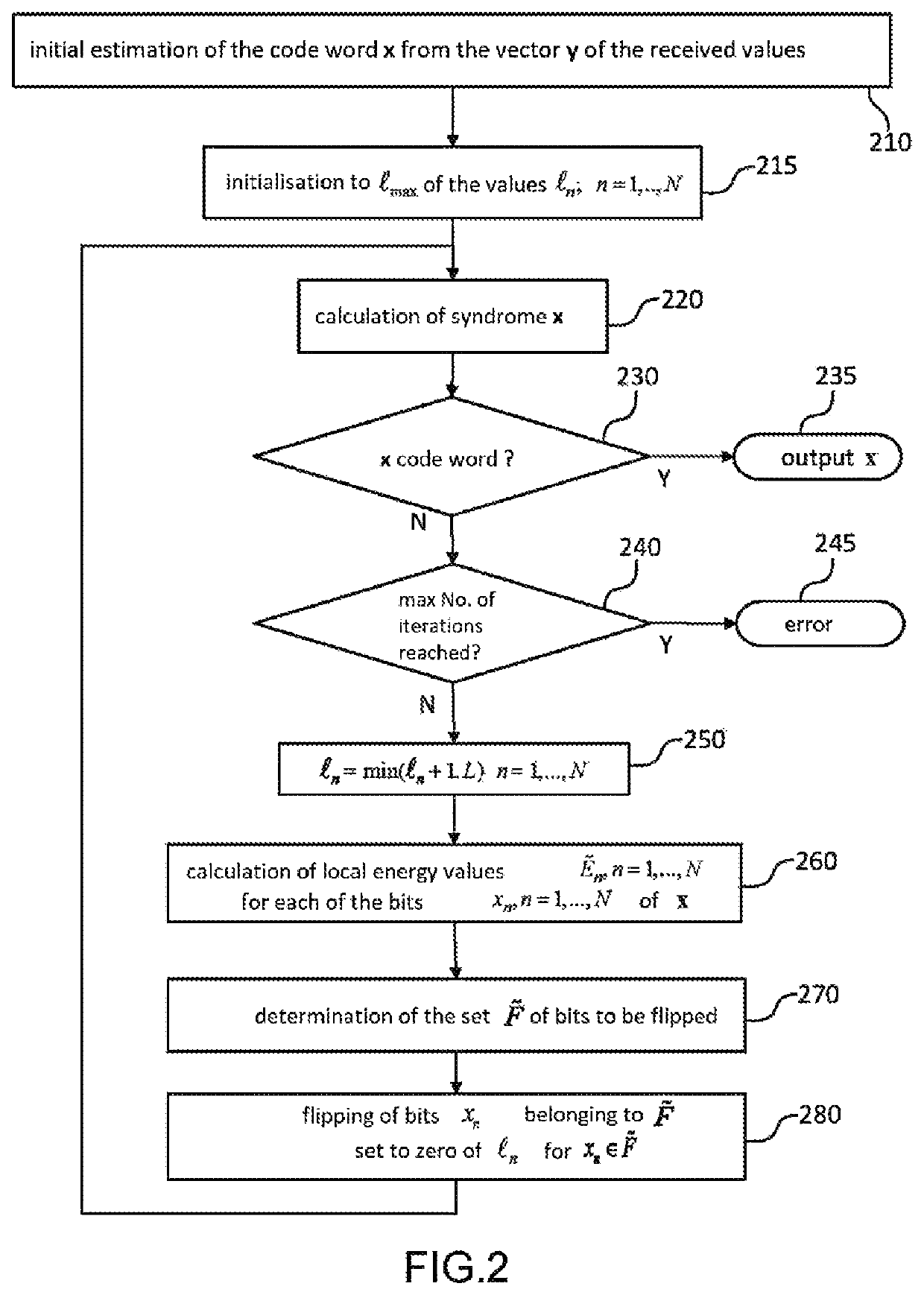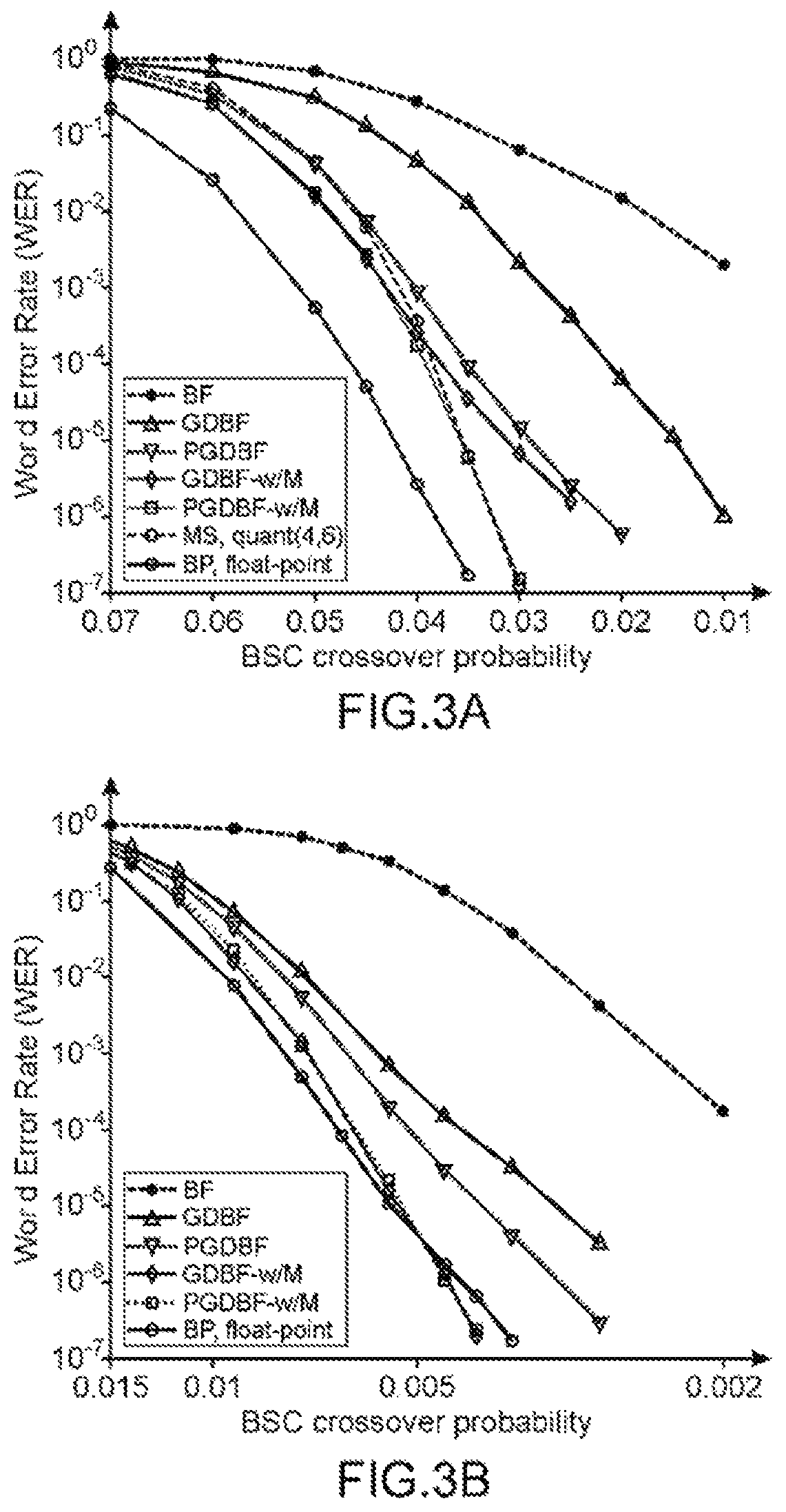Method for decoding inertia-effect bit-flip LDPC codes
a bit-flip, inertia-effect technology, applied in the field of ldpc (low density parity check) codes, can solve the problems of low error rate as a function of signal to noise ratio, general intensive resources and computing time, and performance of decoding methods of the bp type still remains inferior
- Summary
- Abstract
- Description
- Claims
- Application Information
AI Technical Summary
Benefits of technology
Problems solved by technology
Method used
Image
Examples
first embodiment
[0046] each bit in the set ({tilde over (F)}) of the least reliable bits is flipped before the following iteration.
second embodiment
[0047] each bit in the set ({tilde over (F)}) of the least reliable bits is flipped with a predetermined probability p, 0
third embodiment
[0048] to determine the set ({tilde over (F)}) of the least reliable bits, a random noise of predetermined variants (σ2) is added to the value of the local energy function ({tilde over (E)}n) before comparison with said threshold value.
[0049]Advantageously, the threshold value is determined from the minimum value of the local energy function on the bits of the estimated word, increased by a predetermined margin δ≥0.
[0050]Said threshold value may be adaptive and be a function of the total number of iterations performed since the start of decoding.
[0051]Preferably, the inertial component of the local energy function of a bit is a decreasing linear function of the number of iterations performed since the last flipping of this bit.
[0052]Alternatively, the inertial component of the local energy function of a bit is a linear function defined piecewise.
[0053]Preferably the local energy function of a bit is zero beyond a predetermined value L.
[0054]In the latter case, in an initialisation s...
PUM
 Login to View More
Login to View More Abstract
Description
Claims
Application Information
 Login to View More
Login to View More - R&D
- Intellectual Property
- Life Sciences
- Materials
- Tech Scout
- Unparalleled Data Quality
- Higher Quality Content
- 60% Fewer Hallucinations
Browse by: Latest US Patents, China's latest patents, Technical Efficacy Thesaurus, Application Domain, Technology Topic, Popular Technical Reports.
© 2025 PatSnap. All rights reserved.Legal|Privacy policy|Modern Slavery Act Transparency Statement|Sitemap|About US| Contact US: help@patsnap.com



